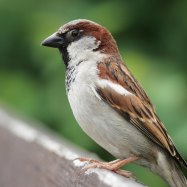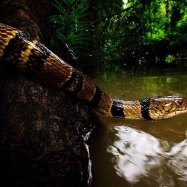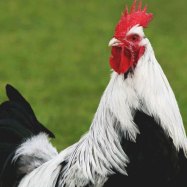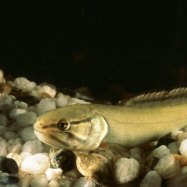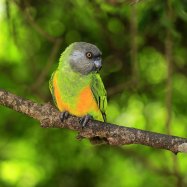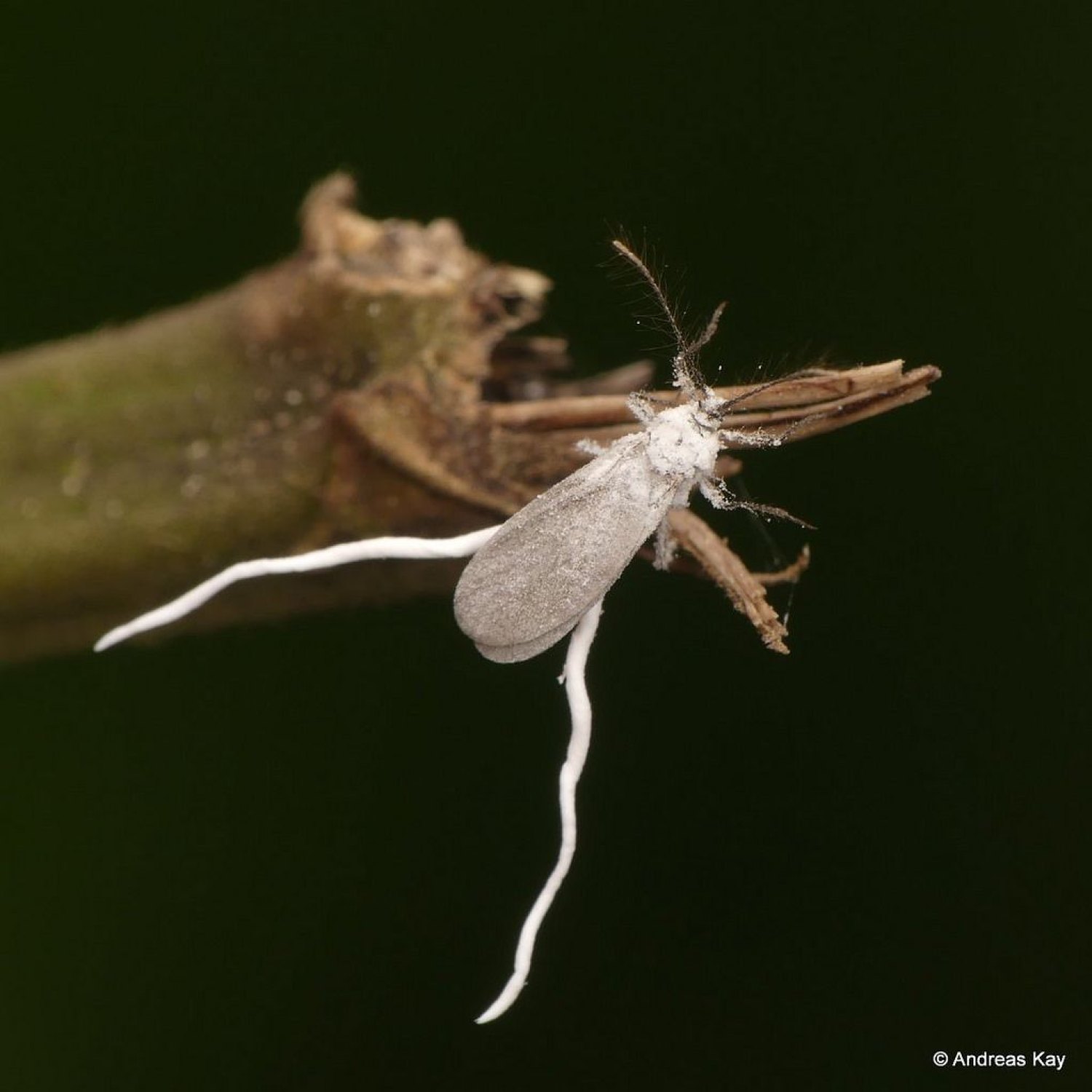
Mealybug
1-5 millimeters
Mealybugs are small, oval-shaped insects found in tropical and subtropical regions. They belong to the Pseudococcidae family and measure 1-5 millimeters in length. Despite their size, they can cause serious damage to crops and plants. Keep an eye out for these pesky creatures in your garden! #mealybug #gardeningtips
Animal Details Summary:
Common Name: Mealybug
Kingdom: Animalia
Habitat: Tropical and subtropical regions, can also be found in greenhouses and indoor plants
The Mighty Mealybug: An Unassuming Insect with Unexpected Impact
If you're an avid gardener or have a penchant for indoor plants, chances are you've come across a strange little insect with a white or grayish color and small, oval-shaped body. This unassuming creature is known as the mealybug, a tiny insect that may not seem impressive at first glance, but has a surprisingly significant impact on both plants and the environment.The mealybug (scientific name: Planococcus citri) belongs to the Kingdom Animalia, making it a member of the vast and diverse animal kingdom. It falls under the Phylum Arthropoda, which includes all animals that have segmented bodies, jointed limbs, and an exoskeleton Mealybug. The mealybug, being a member of the Class Insecta, shares these characteristics with other insects such as ants, bees, and beetles.
The order Hemiptera, or 'true bugs', is where the mealybug finds its place in the classification system. This order also includes other familiar insects like cicadas, stink bugs, and aphids. The family Pseudococcidae is where the mealybug belongs, along with over 2,000 other species of small, soft-bodied insects.
A Worldly Insect
One of the most captivating things about the mealybug is its global reach. This tiny insect is found in tropical and subtropical regions all over the world, from South America to Africa, Australia, and Asia. They have also been known to thrive in greenhouses and indoor plants, making them a common sight for gardeners and houseplant enthusiasts.The exact country of origin for the mealybug is unknown, but it is believed to have originated in the neotropical region, which includes countries like Brazil, Colombia, and Venezuela. From there, it spread to other parts of the world through agricultural and trade practices Manchester Terrier.
A Sneaky Feeding Method
One of the defining characteristics of the mealybug is its feeding method. Mealybugs are sap-sucking insects, meaning they pierce the plant's tissue and feed on the sap. This method of feeding can cause significant damage to plants, especially if the mealybugs are present in large numbers.To extract sap from the plant, mealybugs have a long, thin, and pointed mouthpart called a proboscis. This proboscis is used to penetrate into plant stems, leaves, or fruits to reach the sap-filled tissues. Once they have inserted their proboscis, mealybugs then use their salivary secretions to break down the sap into smaller, digestible particles.
The Ultimate Hitchhiker
What makes the mealybug such an effective and widespread insect is its ability to hitchhike on various plants. Mealybugs, especially females, have a waxy coating that protects them from water loss and predators. This waxy coating also serves as a way for them to attach themselves to plant surfaces, making it easy for them to be transported to new plants and locations.This ease of transportation allows the mealybug to spread quickly from one host plant to the next, damaging crops and plants in its wake. They can also spread through human activities, such as transporting infested plants or contaminated agricultural equipment.
The Notorious Planococcus citri
While there are over 2,000 species of mealybugs, the Planococcus citri is the one that causes the most widespread damage. This species, often referred to as the citrus mealybug, is particularly notorious for its destructive feeding habits.Like most mealybugs, the Planococcus citri attacks plants by feeding on their sap. However, what makes this species stand out is its ability to transmit dangerous plant diseases. It has been known to spread more than a hundred different plant viruses, including citrus tristeza virus, pineapple wilt, and grapevine leafroll, causing chaos for farmers and gardeners alike.
The Battle Against Mealybugs
Despite their small size, mealybugs can cause significant damage to plants, making them a nuisance for gardeners and farmers. They weaken plants by draining them of their essential nutrients, causing stunted growth, yellowing leaves, and even death.The most effective way to control mealybugs is through prevention. Regularly inspecting plants and removing any infested ones can help prevent the spread of these insects. Using biological control methods, such as introducing natural predators like ladybugs or lacewings, also helps keep mealybug populations in check.
In more severe cases, chemical control may be necessary. However, it is important to use pesticides labeled specifically for mealybugs and follow instructions carefully to avoid any harm to the environment or beneficial insects.
The Impact on the Environment
Mealybugs, like many other insects, play an essential role in their ecosystems. They serve as a food source for other insects, birds, and small animals, contributing to the balance of nature. However, the rapid spread of mealybugs, especially invasive species such as the Planococcus citri, can have a detrimental effect on the environment.Mealybugs can cause significant damage to crops and plants, leading to economic losses for farmers. The use of pesticides to control these insects can also have harmful effects on the environment, killing beneficial insects and polluting water sources.
The Amazing World of Mealybugs
Beyond their potential for destruction, mealybugs also have some remarkable features that make them worth learning about. For one, mealybugs have a symbiotic relationship with ants. Ants will often protect mealybugs from predators and, in return, the mealybugs secrete a sugary substance that the ants feed on. This mutually beneficial relationship is known as mutualism and is just one example of how intricate and fascinating nature can be.Mealybugs also have a unique life cycle. Unlike many insects, mealybugs go through three stages: the egg stage, the nymph stage, and the adult stage. In the nymph stage, they resemble tiny, wingless adults, while in the adult stage, they have distinct characteristics such as wings and longer antennae.
Their tiny size and ability to hide under plant surfaces also make them difficult to detect and control. This resilience also makes them an interesting study for scientists and researchers in the field of biochemistry, genetics, and pest management.
In Conclusion
The humble mealybug may not grab your attention at first, but its impact on plants and the environment cannot be ignored. From its widespread distribution to its sap-sucking feeding method, this tiny insect has a significant role in the world around us.While they may be a nuisance for gardeners and farmers, it is important to remember that mealybugs are a vital part of the ecosystem. By understanding their behavior and learning how to control their populations, we can better appreciate the remarkable world of mealybugs and the vital role they play in our environment.

Mealybug
Animal Details Mealybug - Scientific Name: Planococcus citri
- Category: Animals M
- Scientific Name: Planococcus citri
- Common Name: Mealybug
- Kingdom: Animalia
- Phylum: Arthropoda
- Class: Insecta
- Order: Hemiptera
- Family: Pseudococcidae
- Habitat: Tropical and subtropical regions, can also be found in greenhouses and indoor plants
- Feeding Method: Sap-sucking
- Geographical Distribution: Worldwide, commonly found in warm and humid regions
- Country of Origin: Unknown
- Location: Tropical and subtropical regions
- Animal Coloration: White or grayish
- Body Shape: Small and oval-shaped
- Length: 1-5 millimeters
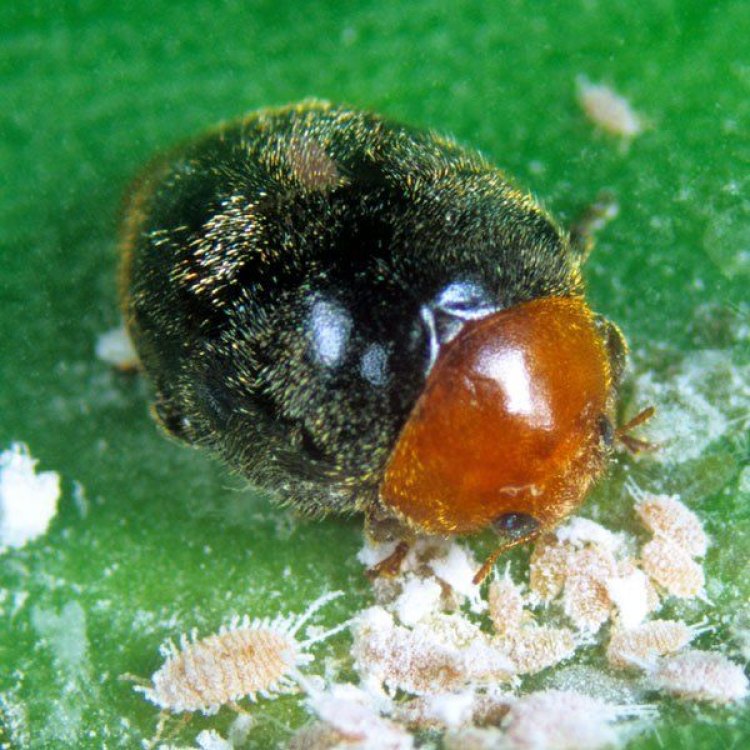
Mealybug
- Adult Size: 1-5 millimeters
- Average Lifespan: 2-10 weeks
- Reproduction: Sexual and asexual reproduction
- Reproductive Behavior: In some species, males are present and mating occurs, while in others, reproduction is entirely asexual
- Sound or Call: Does not produce sound
- Migration Pattern: Sedentary
- Social Groups: Solitary
- Behavior: Typically found in large clusters on plant stems, leaves, and fruit, they are known for their white waxy coating which provides protection and camouflage
- Threats: Predation, parasitism, and insecticides
- Conservation Status: Not listed
- Impact on Ecosystem: Can harm and kill plants by depriving them of sap, can also act as vectors for plant diseases
- Human Use: Considered pests in agriculture and horticulture
- Distinctive Features: White waxy coating, small size
- Interesting Facts: Mealybugs are often controlled using natural enemies such as ladybugs and parasitic wasps
- Predator: Ladybugs, lacewings, parasitic wasps
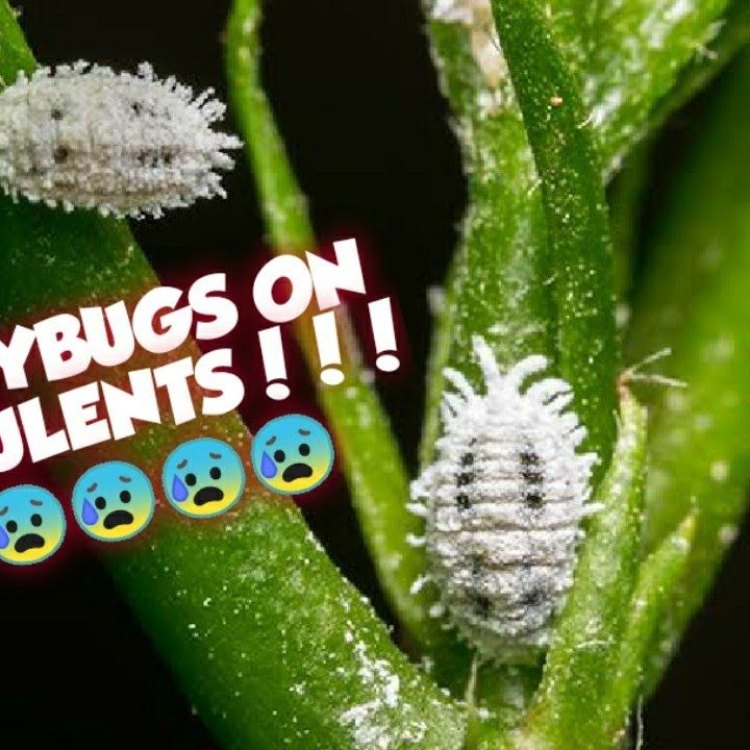
Planococcus citri
The Fascinating World of Mealybugs: Small but Mighty Pests
In the vast world of insects, there are some that capture our imagination with their unique characteristics and behaviors. One such insect is the mealybug, a tiny but mighty pest that wreaks havoc on plants and crops worldwide.These small pests may not seem like much at first glance, but upon closer inspection, they prove to be a complex and intriguing species. In this article, we'll delve into the fascinating world of mealybugs, exploring their size, lifespan, reproductive behavior, and impact on the ecosystem PeaceOfAnimals.Com.
The Basics: What are Mealybugs?
Mealybugs are soft-bodied insects that belong to the family Pseudococcidae. They are commonly found on plants and crops, and there are over 2,000 species of mealybugs in the world.Adult mealybugs typically measure between 1-5 millimeters in size, making them incredibly small and hard to spot. They have a distinct white waxy coating, which gives them a fuzzy, cotton-like appearance. This coating serves as protection and camouflage, making it difficult for predators to detect them.
Mealybugs are found in various habitats, but they are most commonly seen on plant stems, leaves, and fruit. They are known for their ability to rapidly reproduce, often forming large clusters on plants, which can lead to significant damage.
The Reproductive Behaviors of Mealybugs
One of the most intriguing aspects of mealybugs is their reproductive behavior. They can reproduce in two ways: sexual and asexual reproduction Mason Bee.In some species, males are present, and mating occurs. However, in others, reproduction is entirely asexual, with females laying eggs that hatch into females. This asexual reproduction allows mealybugs to multiply rapidly, and within a few weeks, a small infestation can turn into a significant problem.
Interestingly, female mealybugs can also lay unfertilized eggs, which will develop into males. This adaptive behavior helps ensure the survival and expansion of this species.
The Role of Mealybugs in the Ecosystem
While mealybugs may seem small and insignificant, they play a crucial role in the ecosystem. They are herbivores, feeding on the sap of plants, and act as pollinators as they move from plant to plant.However, they can also have a much more destructive impact on the ecosystem. Mealybugs are known to damage and kill plants by depriving them of sap. They also act as vectors for plant diseases, making them a significant threat to agricultural and horticultural industries.
Threats to Mealybugs
Despite their ability to reproduce rapidly and their important role in the ecosystem, mealybugs face several threats. Predation, parasitism, and insecticides all pose risks to their survival.In the wild, mealybugs are preyed upon by a variety of insects, including ladybugs, lacewings, and parasitic wasps. These natural enemies help control populations of mealybugs and maintain balance in the ecosystem.
However, the use of insecticides in agriculture and horticulture has become a significant threat to mealybug populations. These chemicals can kill mealybugs and their natural predators, disrupting the balance of the ecosystem and causing harm to crop production.
The Fascinating Facts about Mealybugs
Aside from their unique characteristics and behaviors, there are several fascinating facts about mealybugs that make them stand out in the world of insects.One interesting fact is that mealybugs do not produce any sound or calls. While other insects may create noise for communication or mating purposes, mealybugs rely on their visual appearance and pheromones for communication.
Another noteworthy fact is that mealybugs are often controlled using natural enemies such as ladybugs and parasitic wasps. This biological control method is an environmentally friendly way to manage infestations and maintain the population of mealybugs in balance.
Human Use and Impact of Mealybugs
While mealybugs play an essential role in the ecosystem, they are considered pests in agriculture and horticulture. They can cause significant damage to crops, leading to financial losses for farmers and affecting food production.To control mealybug infestations, farmers often turn to chemical insecticides, which can have harmful effects on the environment and pose health risks to humans. As such, it is crucial to find sustainable and eco-friendly ways to manage mealybug infestations.
Conservation Status and Future Outlook
Despite their impact on crops and the environment, mealybugs are not listed as a threatened or endangered species. Their ability to rapidly reproduce and adapt to changing environments makes them resilient.However, with the increasing use of chemical insecticides and the loss of natural habitats, the future of mealybugs may be at risk. To ensure their survival and maintain balance in the ecosystem, it is crucial to implement sustainable and eco-friendly methods of controlling mealybug populations.
The Takeaway
In conclusion, mealybugs may be small, but they are mighty pests with unique characteristics and behaviors. Their white waxy coating, speedy reproductive abilities, and role in the ecosystem make them a fascinating species to study.However, their impact on crop production and potential risks to their survival highlight the need for sustainable and eco-friendly methods of managing mealybug infestations. By working towards a balance between their conservation and agricultural needs, we can coexist with mealybugs and appreciate the essential role they play in our ecosystem.

The Mighty Mealybug: An Unassuming Insect with Unexpected Impact
Disclaimer: The content provided is for informational purposes only. We cannot guarantee the accuracy of the information on this page 100%. All information provided here may change without prior notice.

